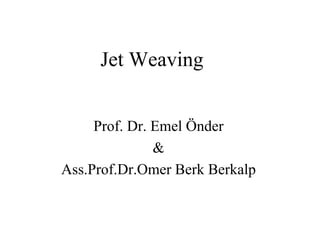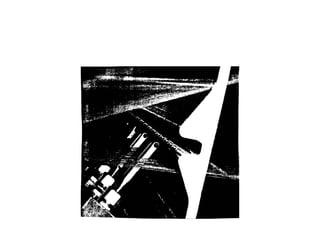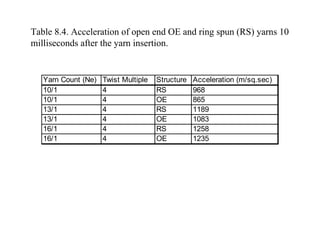This document discusses jet weaving processes. In jet weaving, a fluid such as air or water is used to insert the weft yarn through the shed. For air jet weaving, compressed air is accelerated through a nozzle to provide the force to insert the weft. For water jet weaving, water is pressurized using pumps. Key factors that influence the tractive force on the weft include the velocity and viscosity of the fluid, the roughness of the weft yarn, and temperature. Modern jet looms can operate at high speeds up to 1500 picks per minute for water jet and even higher for air jet looms.




























































